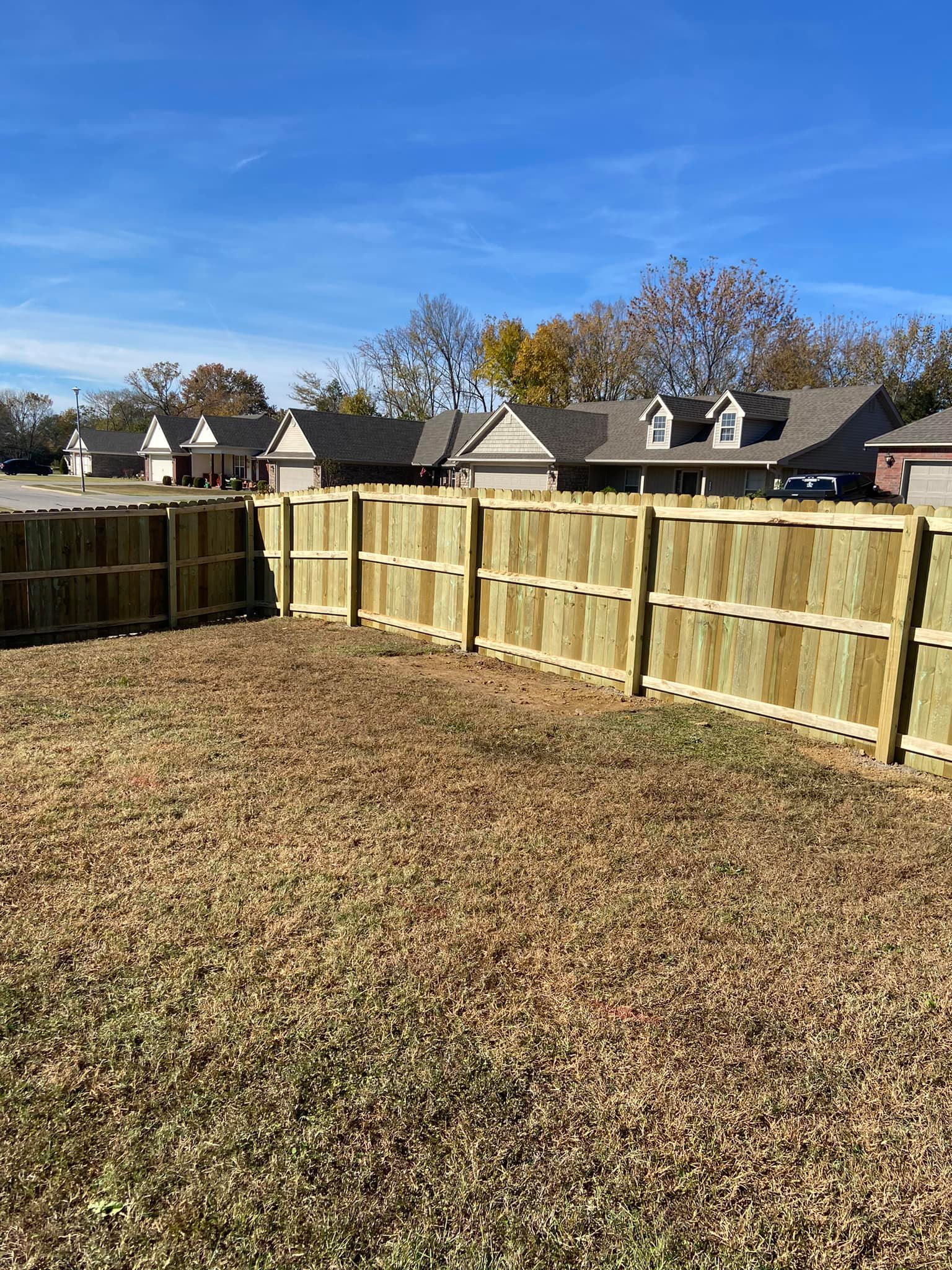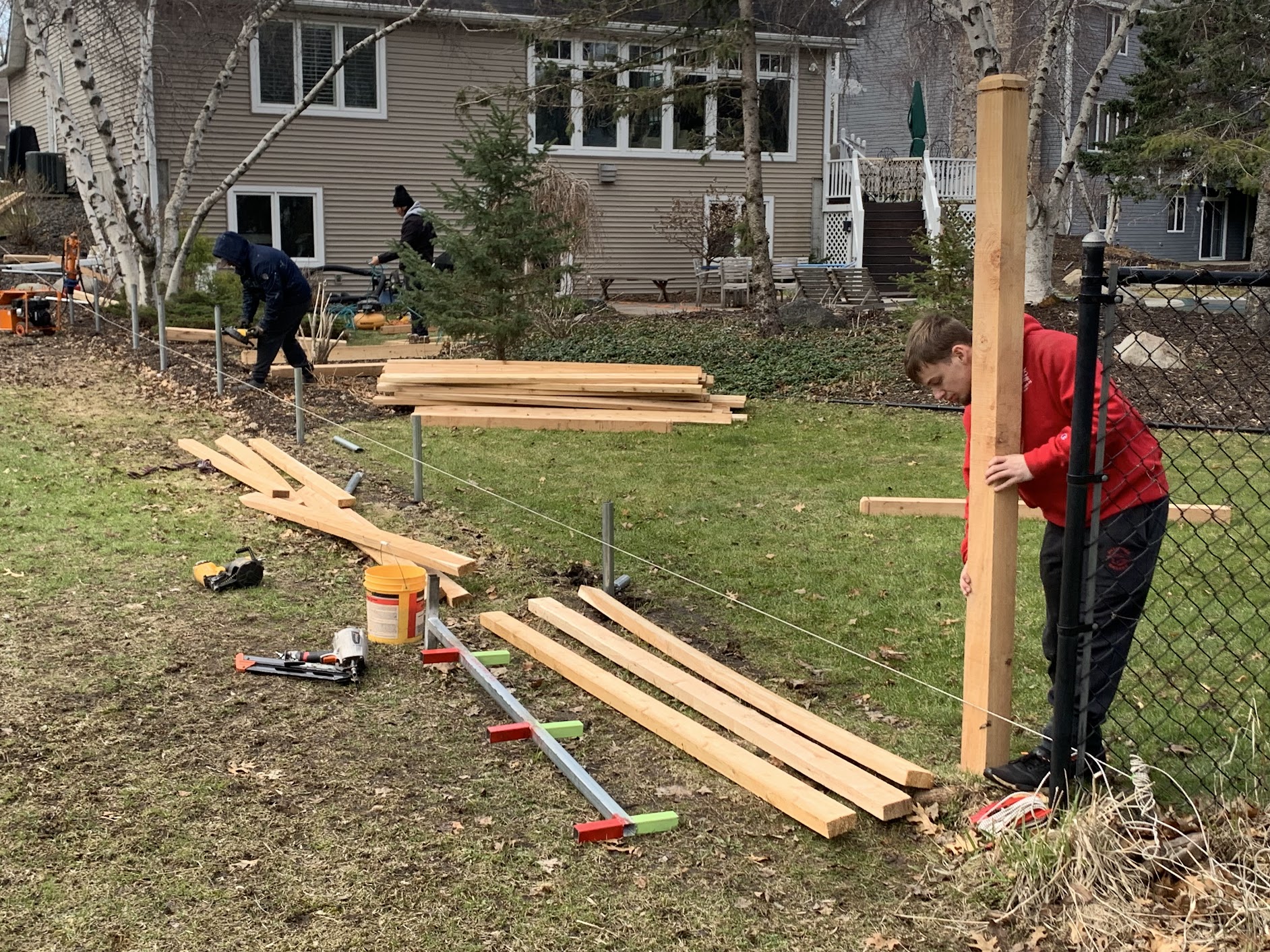Affordable Wood Fence Builders Fort Smith AR: Quality Construction for Every Budget
Affordable Wood Fence Builders Fort Smith AR: Quality Construction for Every Budget
Blog Article
Step-by-Step Guide to Setting Up a Timber Fencing for Your Home or Home
Mounting a timber fencing can considerably boost both the performance and visual allure of your home. Comprehending these steps not only makes certain a tough setup but likewise contributes to long-lasting complete satisfaction.
Preparation Your Fencing Setup
When starting the installment of a timber fence, cautious preparation is necessary to make certain a successful end result. Begin by examining the function of the fence-- whether it is for personal privacy, security, or aesthetics-- because this will certainly affect the style and layout. Next off, examine the residential or commercial property lines, taking care to validate the limits via a survey or title deed to stay clear of disputes with neighbors.
Take into consideration local zoning home owners and regulations' association standards, as these may dictate fencing elevation, layout, and materials. It is a good idea to obtain the required authorizations prior to commencing job, as this can protect against lawful problems later.
Furthermore, take into consideration the surface and dirt problems of your residential property. Unequal ground may need added changes throughout setup, while rocky dirt might necessitate customized tools.
Lastly, develop an in-depth plan that consists of dimensions, the variety of posts, and the spacing between them. A clear design will certainly assist in the installation process and guarantee that you have actually all required materials on hand. By sticking to these preparation steps, you can establish a solid structure for a successful wood fence installment.
Selecting the Right Materials
Picking the ideal products for your timber fencing is crucial to ensuring sturdiness and visual charm. The most common kinds of wood used for fencing include cedar, redwood, and pressure-treated pine. Cedar and redwood are naturally resistant to decay and bugs, making them outstanding choices for longevity. Their abundant colors and natural grain patterns additionally enhance the visual charm of your home.
Pressure-treated want is another preferred alternative, as it is usually a lot more budget friendly. It requires regular maintenance and therapy to prolong its lifespan. When selecting wood, think about the environment of your area; for example, areas with high moisture may gain from wood varieties with greater resistance to moisture.
In addition, you need to assess the fencing design and purpose. A picket fence may require various material specs compared to a personal privacy fence. Decide for thicker boards for architectural integrity, specifically in high-wind areas. Consider the coating; without treatment timber might need staining or securing to shield against weather condition aspects. By thoroughly choosing your materials, you can make certain that your wood fencing will stand the test of time while matching your home's landscape.
Preparing the Installation Site

Preparing the installation site is an essential step in ensuring the effective building and construction of your timber fencing. Correct prep work not just assists in a smoother setup process yet additionally adds to the durability and stability of the fence.

If your site has unequal ground, take into consideration leveling it or changing your fencing design appropriately. This is essential reference to avoid damages throughout setup and make sure security.
Mounting the Fencing Articles

Next, dig holes for each article, guaranteeing they are deep enough-- normally one-third the elevation of the post over ground-- to give stability. A depth of a minimum of 2 feet is suggested for most fences. The diameter of the openings need to be approximately three times the size of the blog posts.
Utilize a level to guarantee they are plumb, readjusting as needed. Correctly installed posts are critical for keeping the structural integrity of the fencing, ensuring it stays secure and upright against environmental stresses. wood fence installation Fort Smith AR.

Including Fence Panels and Ending Up Touches
Once the fence messages are firmly established, the next step includes attaching the fencing panels, which will define the borders of your home. Begin by placing each panel between the blog posts, ensuring they are level and aligned. Utilize a level tool to examine that the panels are directly; this will certainly make sure a professional surface. For optimum stability, safe and secure each panel to the posts making use of galvanized screws or nails, which resist corrosion and deterioration.
After all panels are affixed, evaluate the whole fencing for any kind of voids or imbalances. Make adjustments as required to ensure a consistent look.
In addition, applying a safety tarnish or sealant will boost the timber's sturdiness versus climate elements, prolonging the life of your fencing. With these actions, your wood fencing will not only serve its purpose efficiently but additionally enhance the total charm of your property.
Verdict
Finally, the effective setup of a timber fencing requires mindful planning, choice of appropriate products, extensive site preparation, and specific execution of installment techniques. Interest to detail throughout each stage guarantees architectural integrity and aesthetic allure. By adhering to the laid out steps, homeowner can boost safety and security, aesthetic, and personal privacy allure, ultimately contributing to the general worth and capability of the residential property. Correct upkeep post-installation further prolongs the life and look of the timber fencing.
When getting started on the installment of a timber fence, careful planning is vital to guarantee a successful outcome.Picking the suitable materials for your wood fencing is critical to ensuring resilience and visual allure. A useful link picket fencing may require different product requirements contrasted to a personal privacy fence.With the setup site effectively prepared, the following action includes setting the fencing blog posts, which offer as the foundation of your timber fence.Once the fence messages are firmly established, the next step entails connecting the fence panels, which will specify the limits of your residential or commercial property.
Report this page